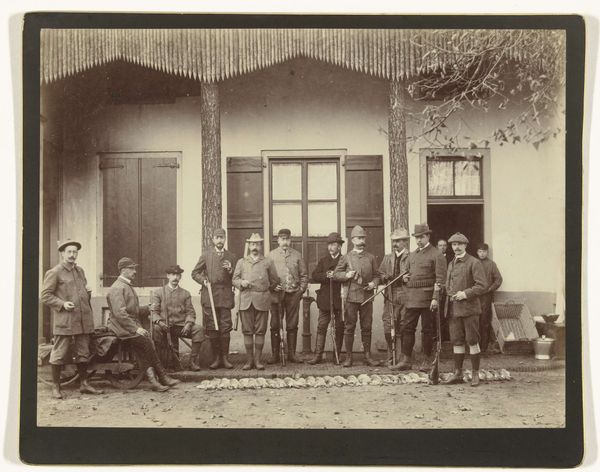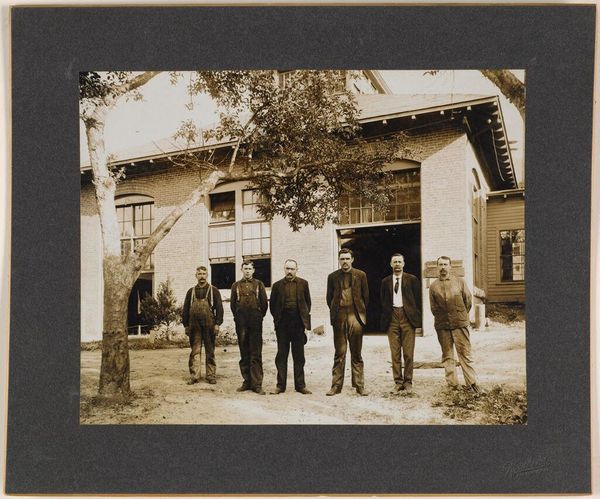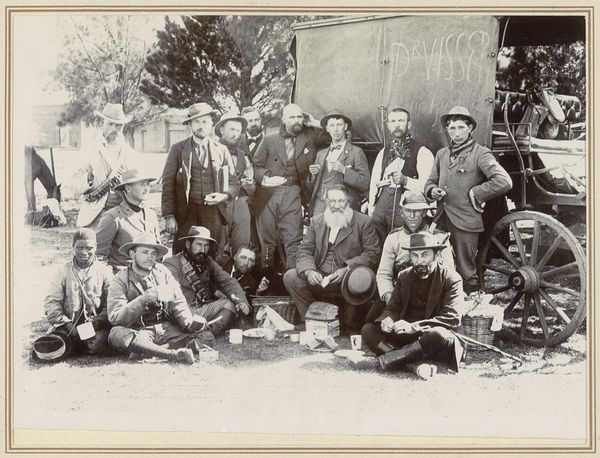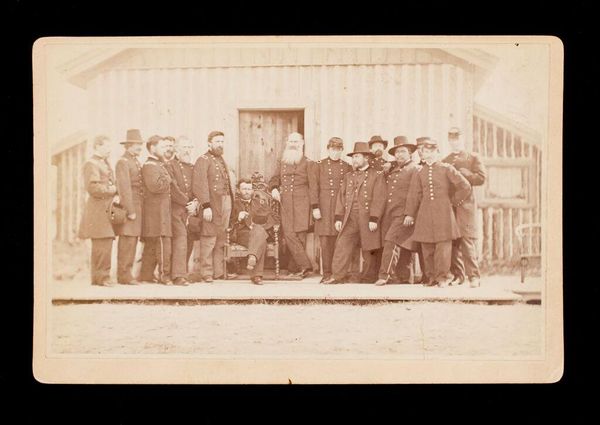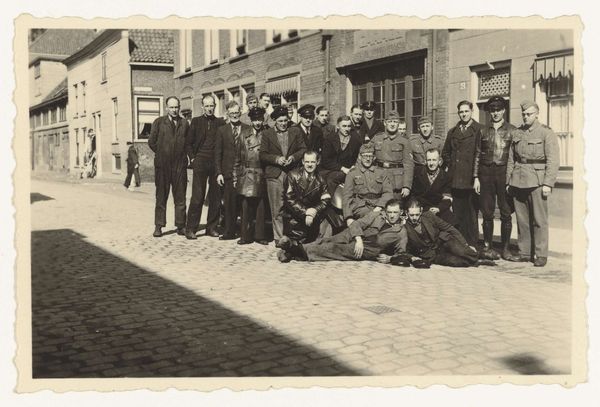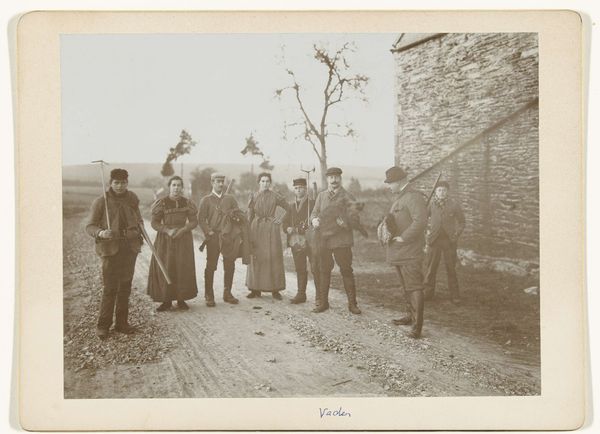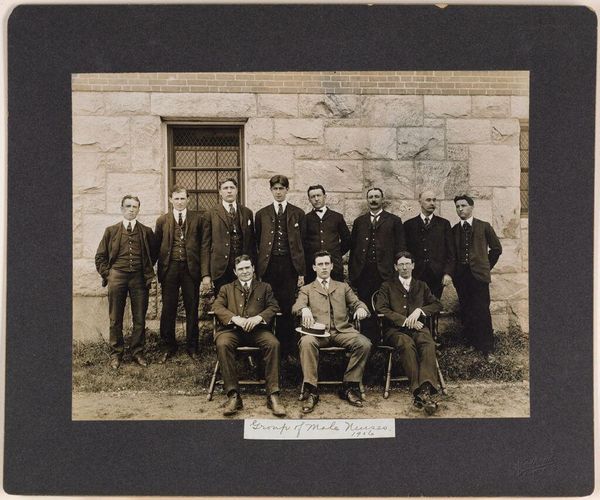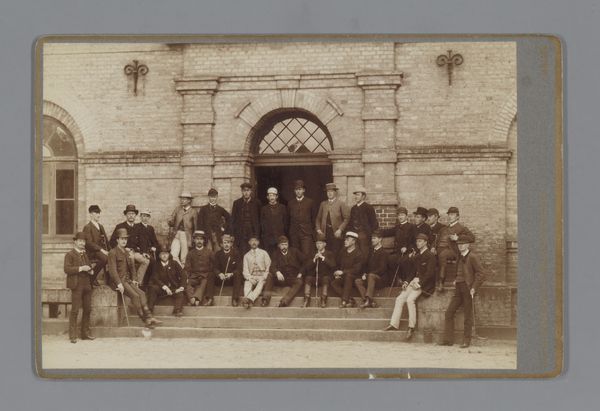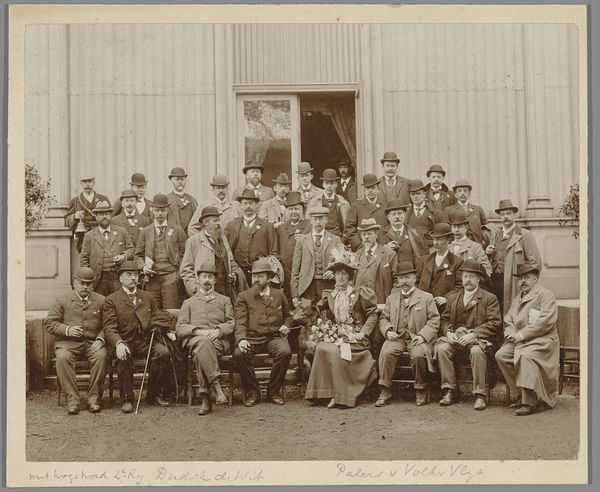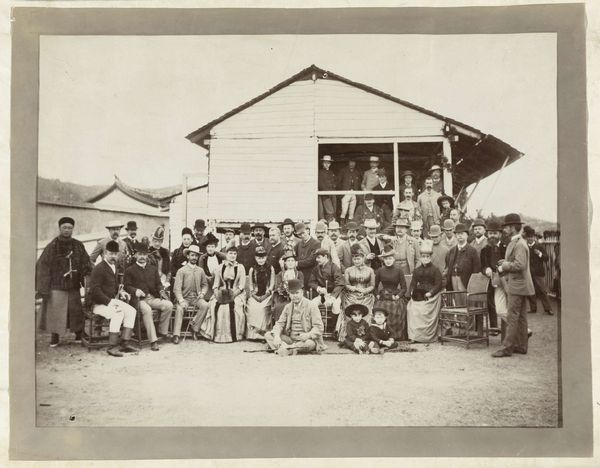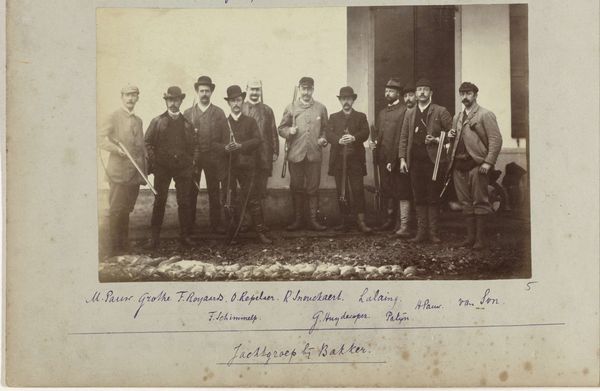
Groepsportret van jagers en helpers, o.a. geheel rechts Henry Pauw van Wieldrecht, met het geschoten wild aan hun voeten Possibly 1898
0:00
0:00
photography, gelatin-silver-print
#
portrait
#
photography
#
group-portraits
#
gelatin-silver-print
#
genre-painting
#
realism
Dimensions: height 167 mm, width 226 mm, height 199 mm, width 269 mm
Copyright: Rijks Museum: Open Domain
Editor: Here we have an interesting gelatin-silver print from possibly 1898, titled "Groepsportret van jagers en helpers…", now at the Rijksmuseum. It's a group portrait of hunters with their kill. It strikes me as both a celebration and a stark depiction of a hunting party. What do you make of it? Curator: From a materialist perspective, I find it revealing. The gelatin-silver print itself is a product of specific industrial processes, transforming raw materials into a reproducible image. The choice of photography, as opposed to painting, democratizes representation, even if the subjects are elites. Notice how the very act of photographing—a relatively novel technology at the time—intersects with the traditional labor of hunting, altering its social meaning. Editor: That's a great point. I was focusing on the hunters, but hadn't thought about the means of representation itself. Does the materiality of the photograph challenge the glorification of hunting in any way? Curator: Precisely. The reproducibility of the image allows for broader circulation and scrutiny. It invites us to consider the economics of hunting – the firearms, clothing, and land – and how these connect to larger systems of power and consumption. Also, observe the backdrop – is that deliberately rustic, perhaps manufactured to heighten the sense of tradition? Editor: It could be. The backdrop almost looks like a stage. It is as if they wanted the world to remember their catch. This piece invites interesting discussion. Curator: Absolutely, looking at the material processes involved and the social context within which they’re intertwined encourages deeper engagement with both art and history.
Comments
No comments
Be the first to comment and join the conversation on the ultimate creative platform.
